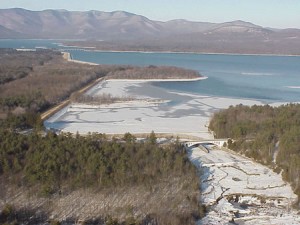 Archaeology may be one of the most misunderstood fields. By encompassing aspects of history, science and anthropology, archaeology helps explain past communities and their adjustments to cultural and environmental changes. In class we examined the Ashokan Reservior. The Ashokan Reservior is located approximately 70 miles north of New York City and holds 123 billion gallons of water. It was placed into service in 1915 and currently supplies 40% of New York City’s daily drinking water. However, New York City’s thirst for drinking water has caused the displacement of thousands of people. These changes have distorted the balance of communities but also the culture and economics surrounding them. One area severely affected was Ulster County where during the turn of the century, many residents were unfairly compensated for their homes. For an archaeologist this may not seem like a relevant issue, however, archaeology especially in this case is essential. As we have discussed in class the many stereotypes surrounding archaeology and the fact of the matter is, the recent events involving the Ashokan Reservior are not typically considered ‘ancient’ or ‘glamorous’ enough to be further researched by an archaeologist. However, by researching the areas affected by New York City’s desire for water, useful information about the culture as well as environmental changes can be studied so we are more adequately prepared for the future.
Archaeology may be one of the most misunderstood fields. By encompassing aspects of history, science and anthropology, archaeology helps explain past communities and their adjustments to cultural and environmental changes. In class we examined the Ashokan Reservior. The Ashokan Reservior is located approximately 70 miles north of New York City and holds 123 billion gallons of water. It was placed into service in 1915 and currently supplies 40% of New York City’s daily drinking water. However, New York City’s thirst for drinking water has caused the displacement of thousands of people. These changes have distorted the balance of communities but also the culture and economics surrounding them. One area severely affected was Ulster County where during the turn of the century, many residents were unfairly compensated for their homes. For an archaeologist this may not seem like a relevant issue, however, archaeology especially in this case is essential. As we have discussed in class the many stereotypes surrounding archaeology and the fact of the matter is, the recent events involving the Ashokan Reservior are not typically considered ‘ancient’ or ‘glamorous’ enough to be further researched by an archaeologist. However, by researching the areas affected by New York City’s desire for water, useful information about the culture as well as environmental changes can be studied so we are more adequately prepared for the future.
The snowball effect created by the displacement of a single person can lead to socioeconomic changes that can affect entire communities. An archaeologist is able to study artifacts from these sites in order to complete the story of how much the Ashokan Reservior has affected the surrounding areas. Moreover, archaeologists, through these sites may be able to uncover social class differences that may lead to further understandings of cultural effects of the Ashokan Reservior. It may seem strange that archaeology can be used to solve these issues. However, for people who are unaware, archeology is an excellent median to publicize this information.
The recent events of hurricane Katrina caused a similar snowball effect like the one examined in the Ashokan Reservior. In class we briefly discussed how socioeconomic factors can be seen on a larger scale. For instance, hurricane Katrina was on the radar of the entire nation while hundreds of cameras documented the disaster. Even though the hurricane is still considered recent in history, a plethora of “environmental conditions, politics, and economic forces” can be examined to shape the archeological record of New Orleans (Toner). The article examines the artifacts collected by Professor Dawdy that included “Native American pottery, French cosmetic jars and wine bottles” that were lost in the wake of the storm. From these artifacts, cultural and environmental changes can be understood about the communities destroyed by Katrina. By using the techniques and approaches referenced on pages 76-82 of Wendy Ashmore’s Discovering Our Past, the hope is that New Orleans may begin a more concerted effort to protect the culture that it represents. With the use of archaeology to understand the communities involved in devastation of Katrina, more questions can be answered to further the shelter New Orleans in the future. Furthermore, the hope is that the similar techniques used in New Orleans can also be implemented in the areas affected by the Ashokan Reservior. Archaeologists can understand the communities involved with the Ashokan Reservior to help understand the affects of relocation on culture and environment. Therefore, the use of archaeology is a multifaceted tool changing the way people view the world.

